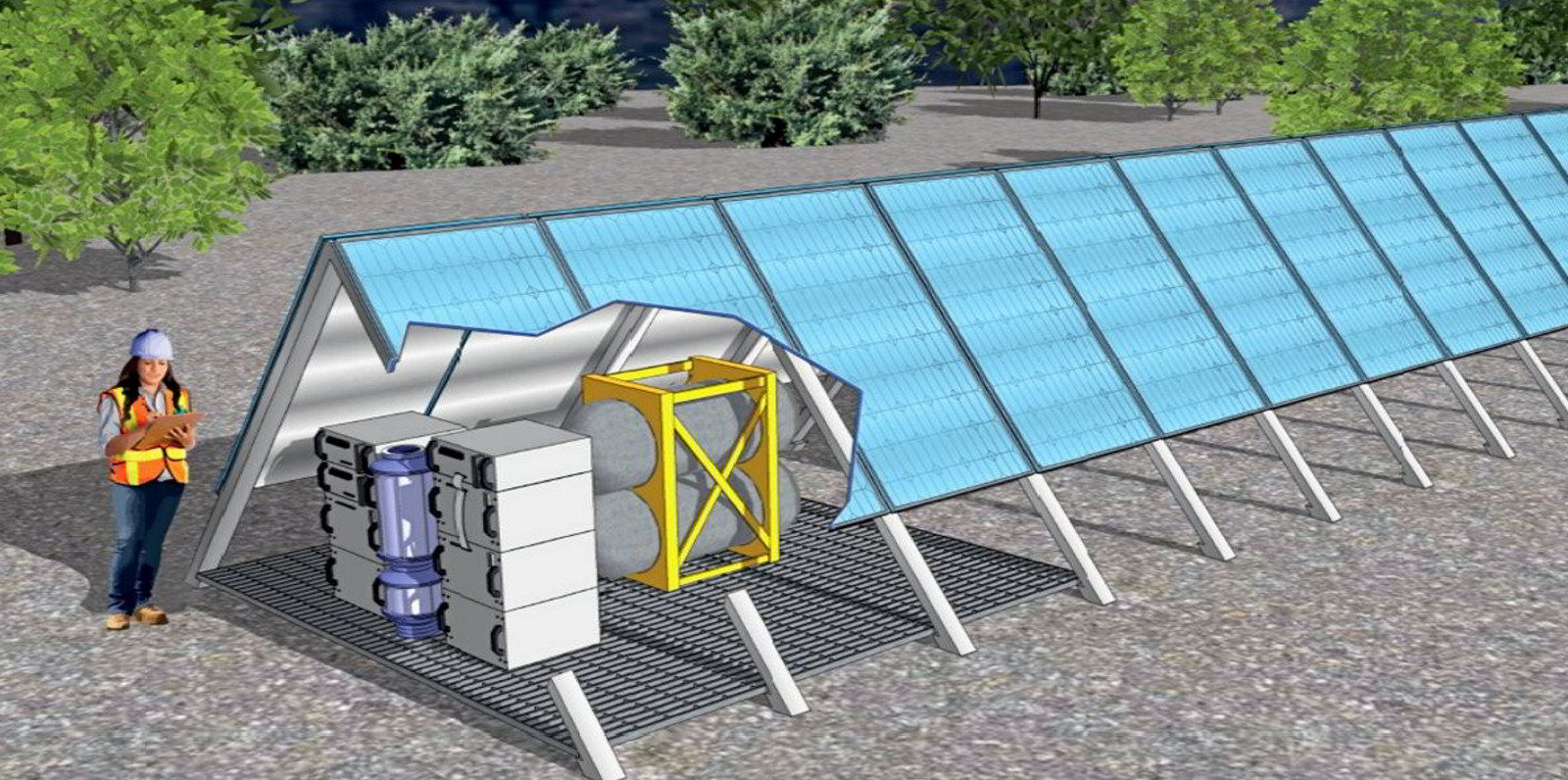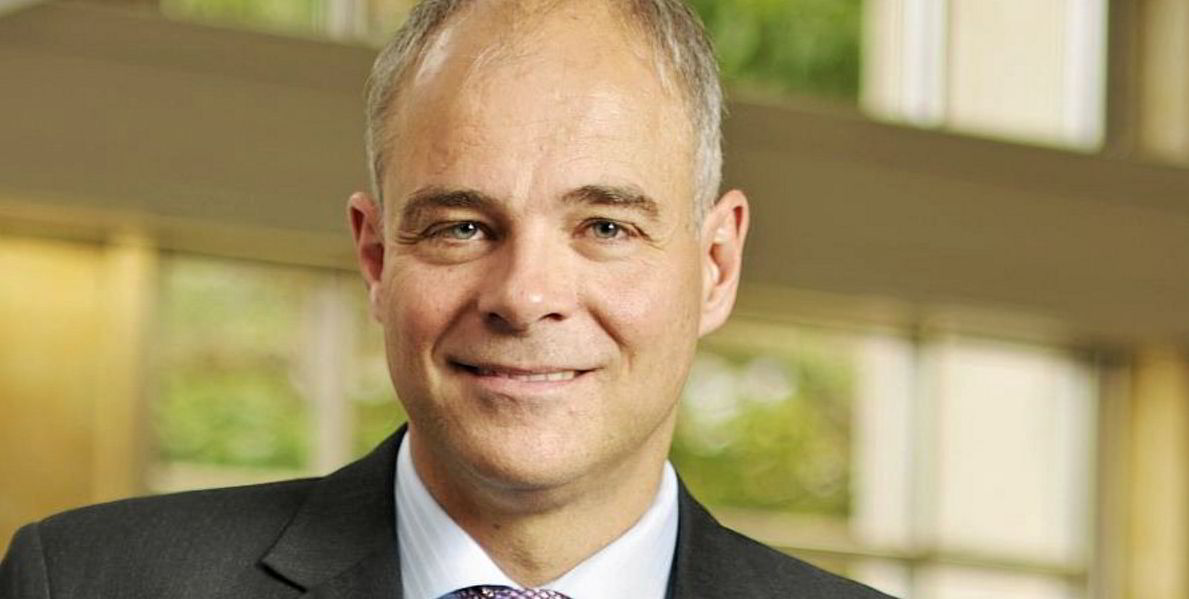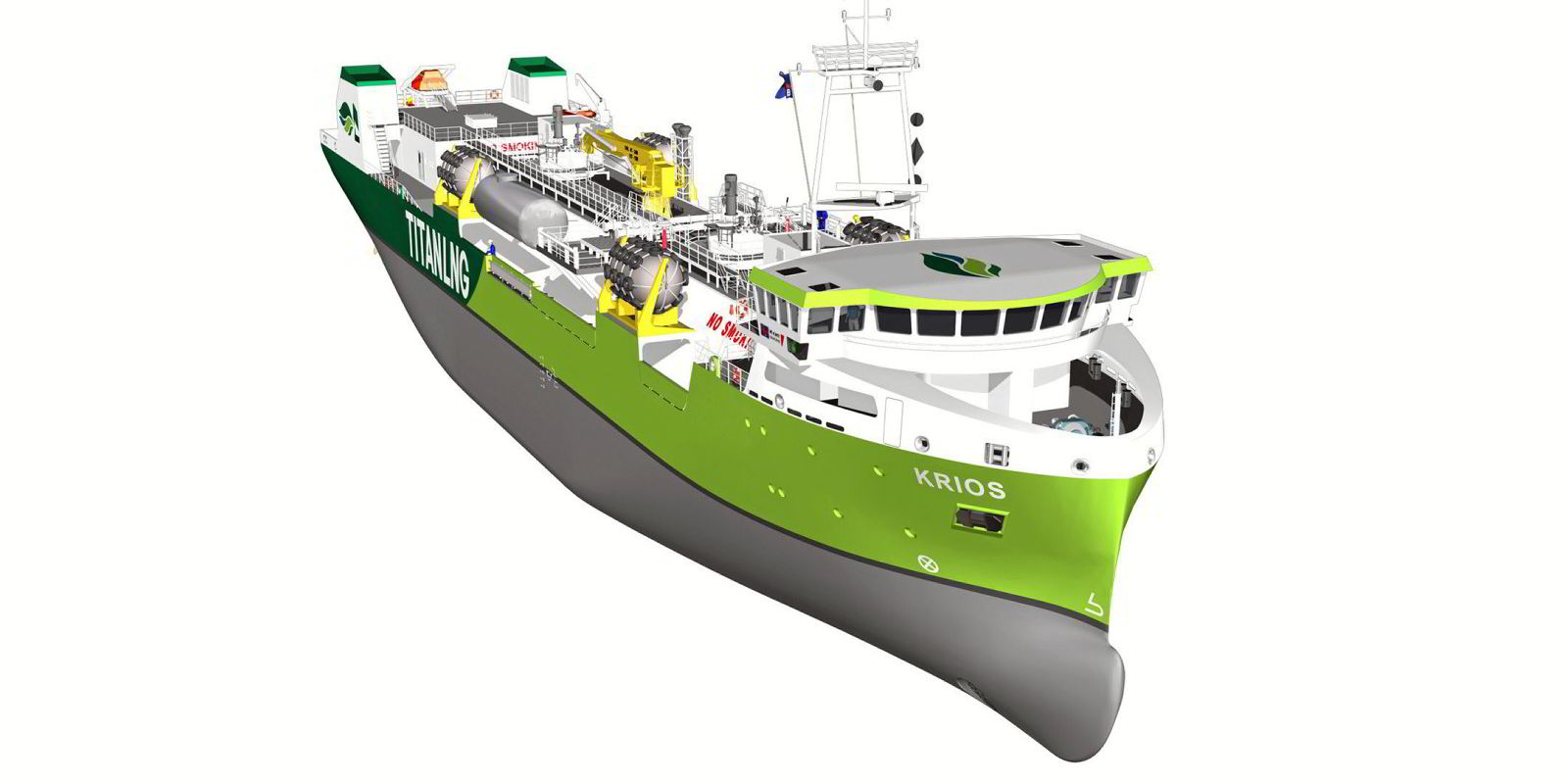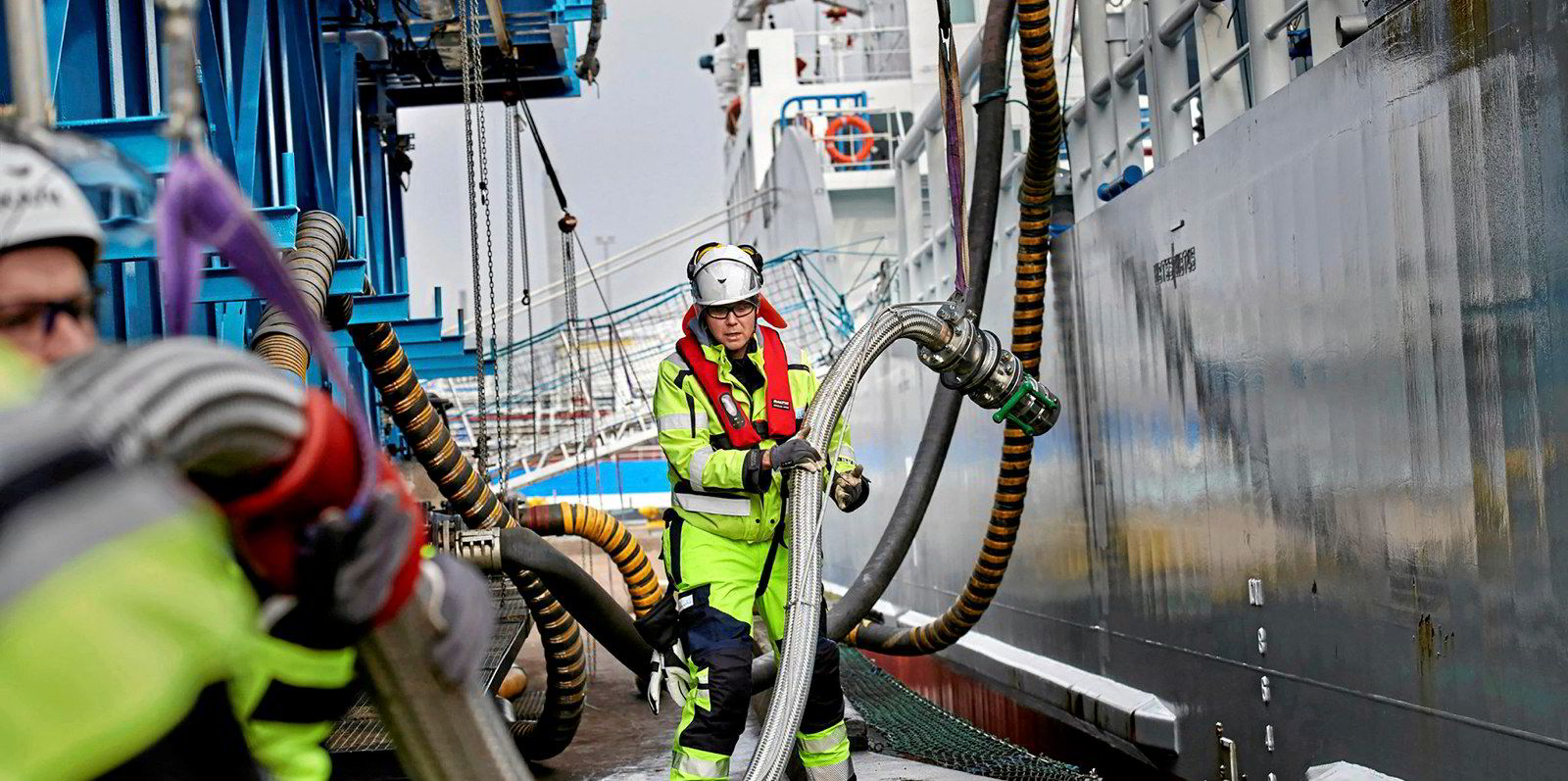An historic first bunkering of a vessel with synthetic LNG or e-LNG is due to take place in Germany this month — but, on the other side of the world, Australian renewable energy company Southern Green Gas (SGG) has a plan to dramatically scale up production of the carbon-neutral fuel.
SGG managing director Rohan Gillespie told TradeWinds that the company is already in talks with potential buyers, including two shipowners with LNG dual-fuelled newbuildings.
"We would like to see cargoes leaving Australia in substantial volumes by 2030," he said.
Synthetic LNG is produced by generating electricity from low-carbon or renewable-energy sources to conduct electrolysis — splitting water into hydrogen and oxygen. CO2 is added, creating methane and water.
In Australia, Gillespie said SGG plans to extract CO2 from the atmosphere and use solar energy for the electrolysis to produce synthetic, or what the company terms "renewable methane".
He said the technology also allows the required water — a scarce resource in Australia — to be taken from the atmosphere.
Multiple modules
Key to the design is the use of small renewable methane production modules containing all the processes that can be mass manufactured to keep costs down.

A demonstration project is in development for a site at Wallumbilla, in southern Queensland, near a major gas trading hub.
SGG was set up in 2013 by Gillespie and co-founder Brett Cooper, who were looking at methods of producing a carbon-neutral fuel that leveraged existing infrastructure.
The pair knew it was possible to make very low-cost hydrogen using Australia’s abundant potential for solar power that could be produced on cheap non-arable land in the country’s interior.
Civil engineer Gillespie said they started putting together technology to extract CO2 from the atmosphere.
Under their plan, the renewable methane produced would be transported through existing gas pipelines that run across some of this remote unpopulated land in the heart of Australia.
“That existing pipeline infrastructure is the route to market for us,” he said.
It would be delivered to one of Australia’s three LNG hubs in Gladstone, Darwin and northwest Australia, where it would be liquefied in the plant's spare capacity for domestic use or export.
One cent land
"The unique opportunity in Australia is to produce this green methane in what we call 'one cent land'," Cooper said.
"These are areas of Australia where the solar intensity is so high, the land cost so low and at vast scale that we can produce electrons at $10 per MW hour, hence one cent per kW hour. This is all about the energy to produce the methane."
Gillespie said the company aims to “be on a pathway to producing five million tonnes per annum of renewable LNG by 2030” and envisages full-size LNG carriers shipping the product.
SGG is aware of the potential to use the synthetic LNG for bunkering, either for full loads or as a drop-in fuel.
Gillespie said SGG has recently launched its "founding buyers initiative". He revealed that two "major shipping companies" — one Asian and one European — that are building LNG dual-fuelled vessels have expressed interest, along with two gas utilities, one in Asia and an energy major.
Founding buyers provide capital to fund the project in exchange for guaranteed offtake rights.
Price point
Gillespie said the initial price point for the synthetic LNG would be around twice that of its fossil cousin. He cited French liner company CMA CGM as paying a similar level for drop-in volumes of bio-LNG last year.
"As an interim cost target, we think there is strong interest at that price," he said, adding that the price will reduce as volumes expand.
Gillespie said SGG is about halfway through putting together its AUD 2.2m ($1.6m) demonstration project, to which the Australian Renewable Energy Agency is contributing AUD 1.1m.
He added that SGG is undertaking a AUD 4m capital-raising exercise but is looking for about $20m for the project.
Methanol story?
So will it work?
Gillespie said all the different components are proven technologies, aside from the atmospheric CO2 capture that has yet to be tested commercially.
The demonstration project is due to be in operation by 2022, with commercial production from a first 30,000-tonnes-per-annum development — using some 50,000 modules — targeted for 2025.
Gillespie casually mentioned that SGG "can do" renewable methanol as well but said: "That's another story."








